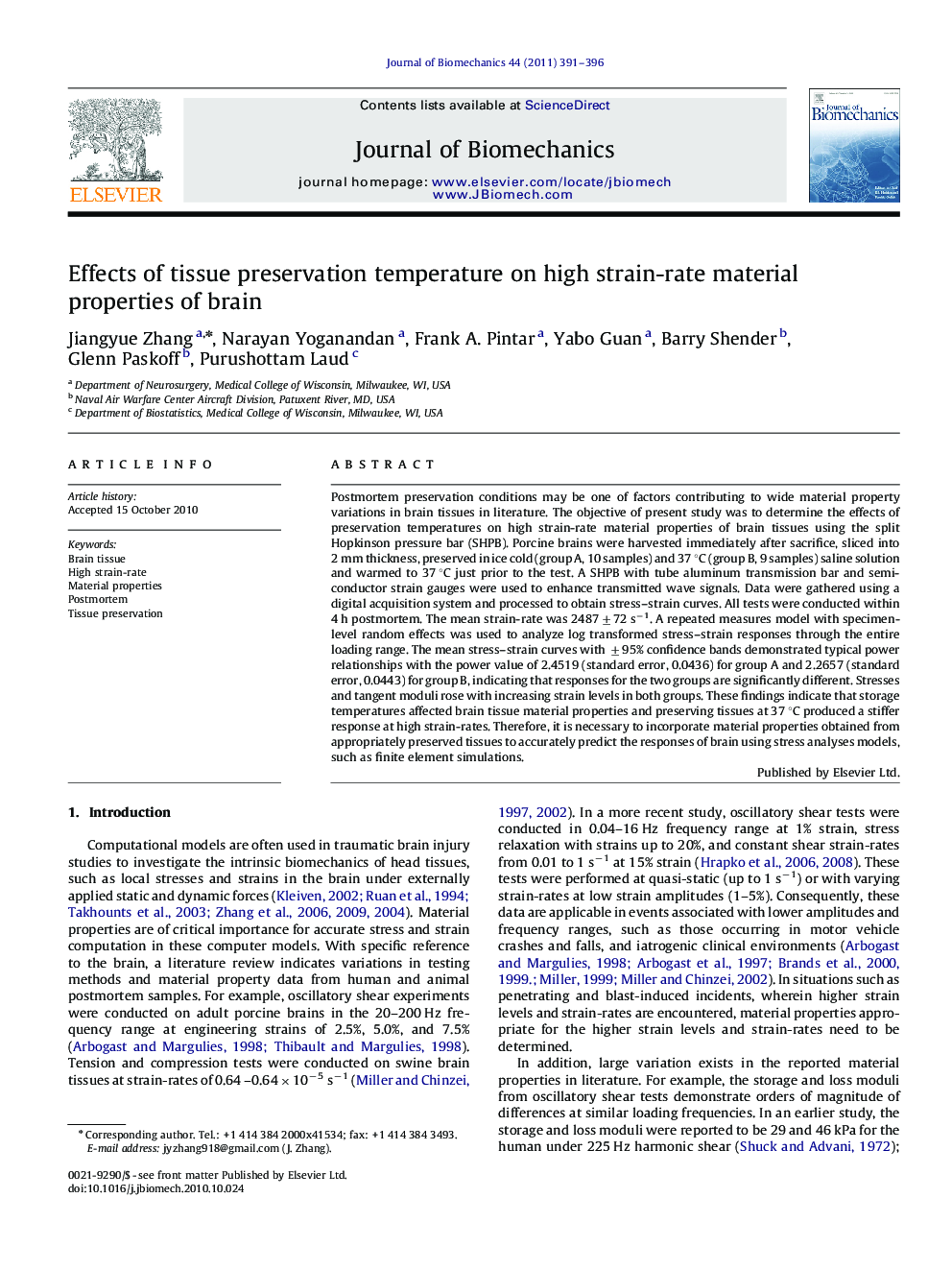| کد مقاله | کد نشریه | سال انتشار | مقاله انگلیسی | نسخه تمام متن |
|---|---|---|---|---|
| 873042 | 910296 | 2011 | 6 صفحه PDF | دانلود رایگان |

Postmortem preservation conditions may be one of factors contributing to wide material property variations in brain tissues in literature. The objective of present study was to determine the effects of preservation temperatures on high strain-rate material properties of brain tissues using the split Hopkinson pressure bar (SHPB). Porcine brains were harvested immediately after sacrifice, sliced into 2 mm thickness, preserved in ice cold (group A, 10 samples) and 37 °C (group B, 9 samples) saline solution and warmed to 37 °C just prior to the test. A SHPB with tube aluminum transmission bar and semi-conductor strain gauges were used to enhance transmitted wave signals. Data were gathered using a digital acquisition system and processed to obtain stress–strain curves. All tests were conducted within 4 h postmortem. The mean strain-rate was 2487±72 s−1. A repeated measures model with specimen-level random effects was used to analyze log transformed stress–strain responses through the entire loading range. The mean stress–strain curves with ±95% confidence bands demonstrated typical power relationships with the power value of 2.4519 (standard error, 0.0436) for group A and 2.2657 (standard error, 0.0443) for group B, indicating that responses for the two groups are significantly different. Stresses and tangent moduli rose with increasing strain levels in both groups. These findings indicate that storage temperatures affected brain tissue material properties and preserving tissues at 37 °C produced a stiffer response at high strain-rates. Therefore, it is necessary to incorporate material properties obtained from appropriately preserved tissues to accurately predict the responses of brain using stress analyses models, such as finite element simulations.
Journal: Journal of Biomechanics - Volume 44, Issue 3, 3 February 2011, Pages 391–396